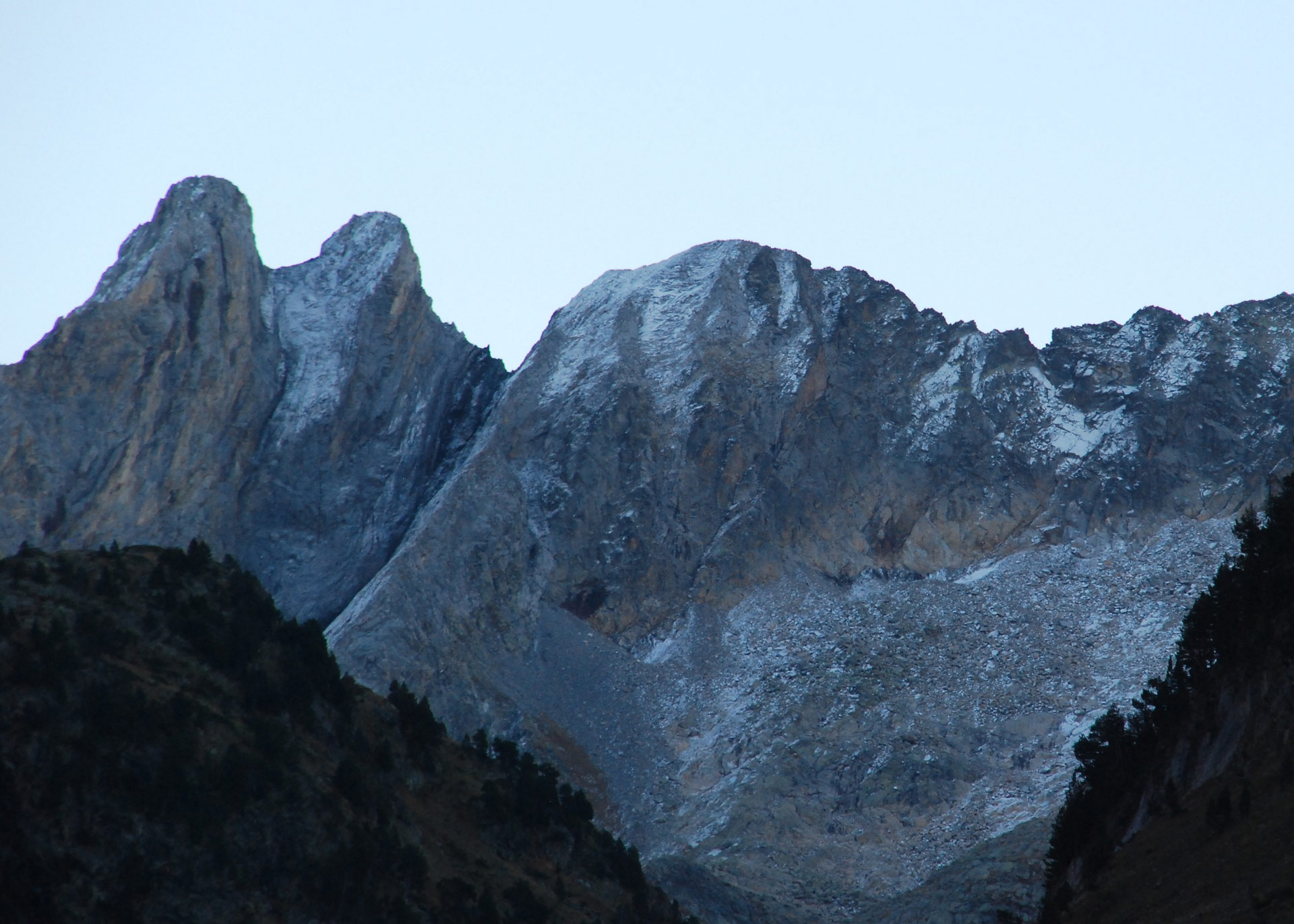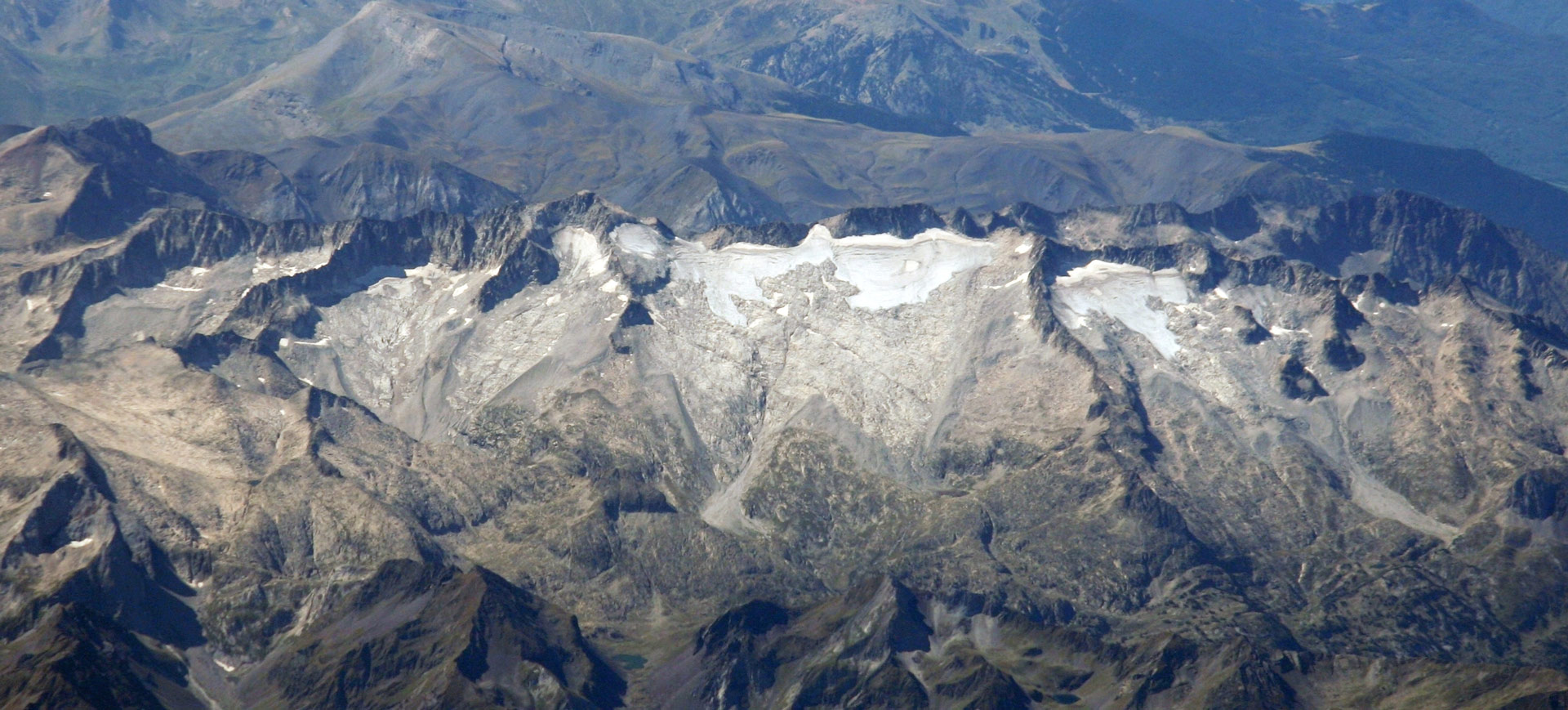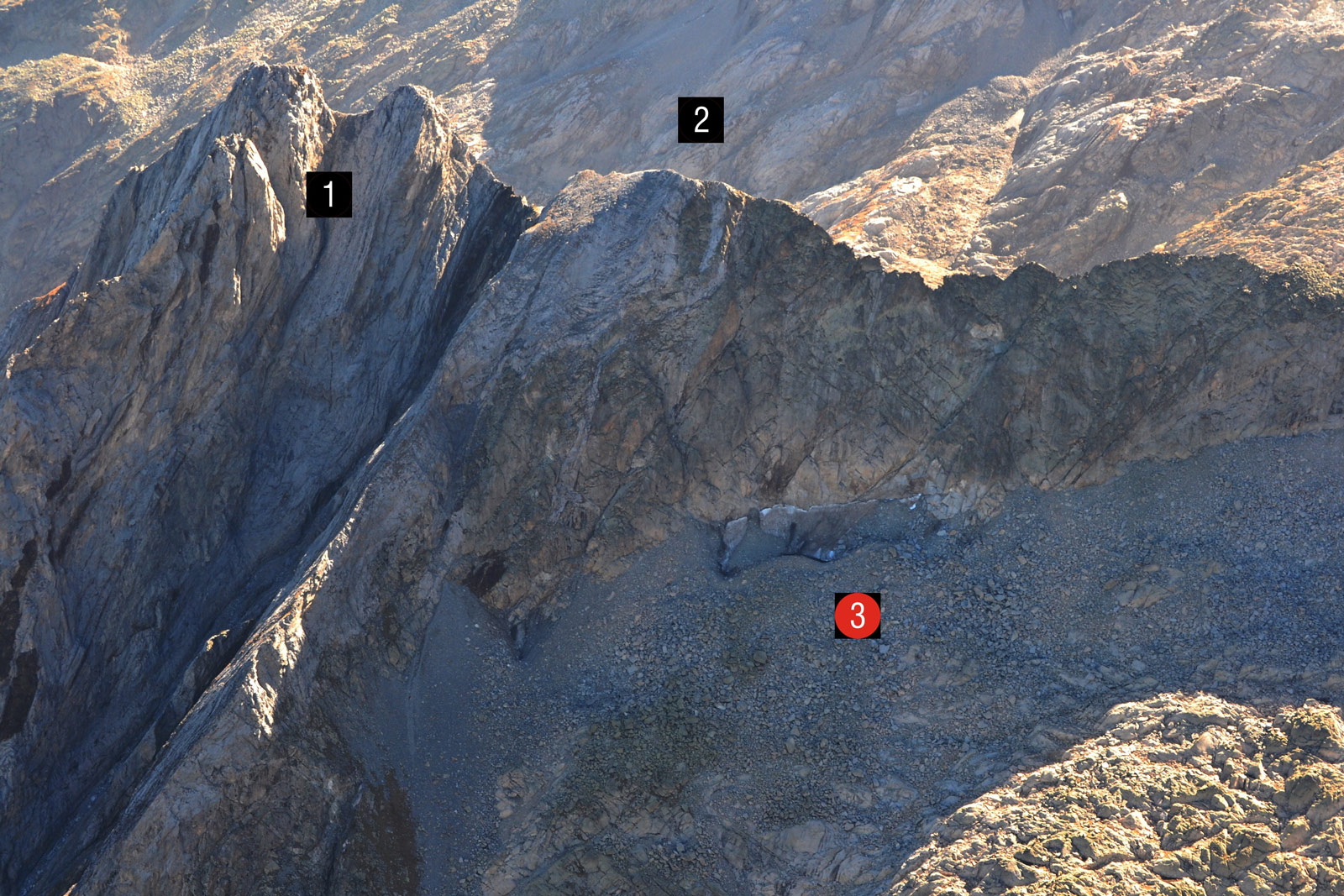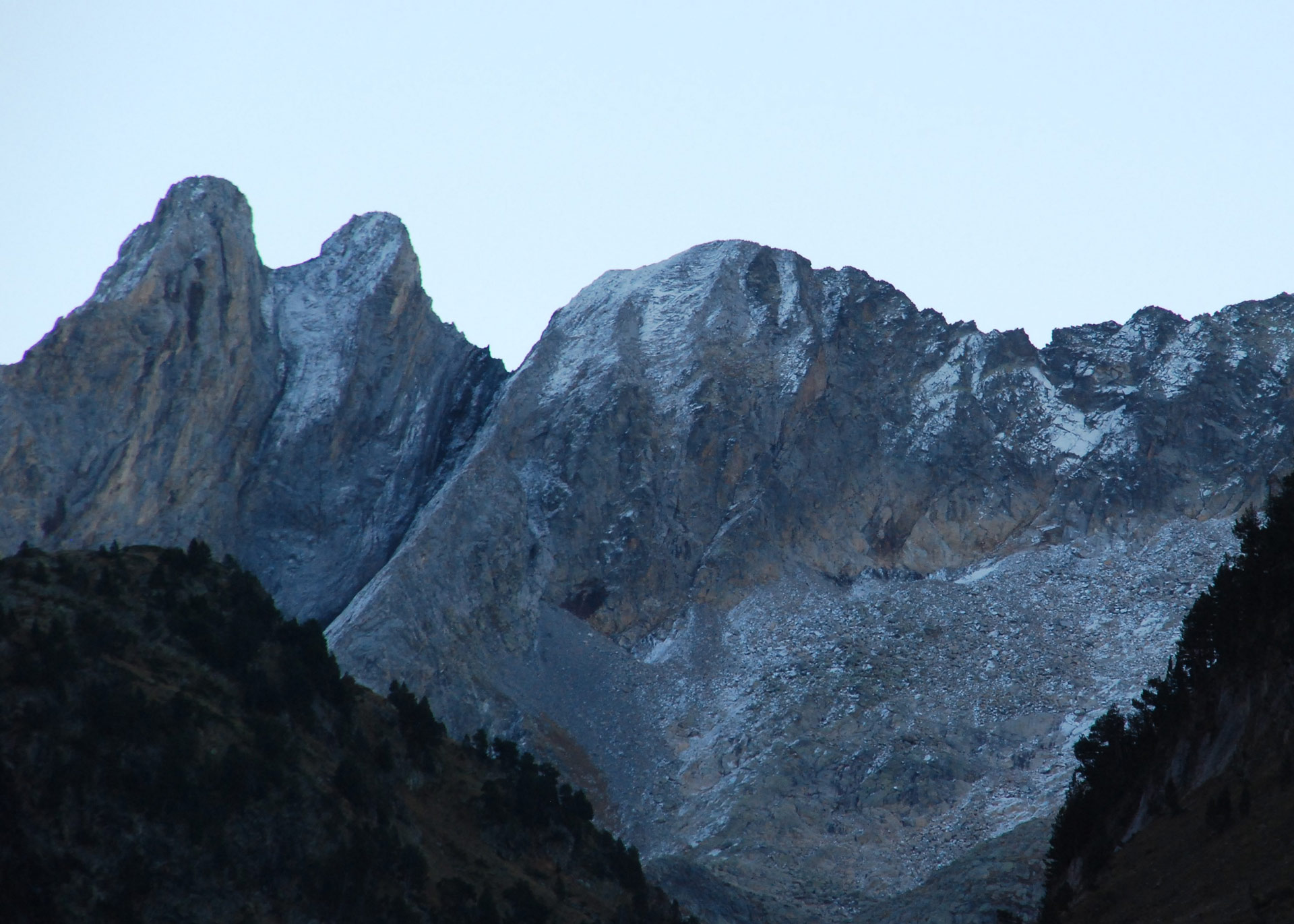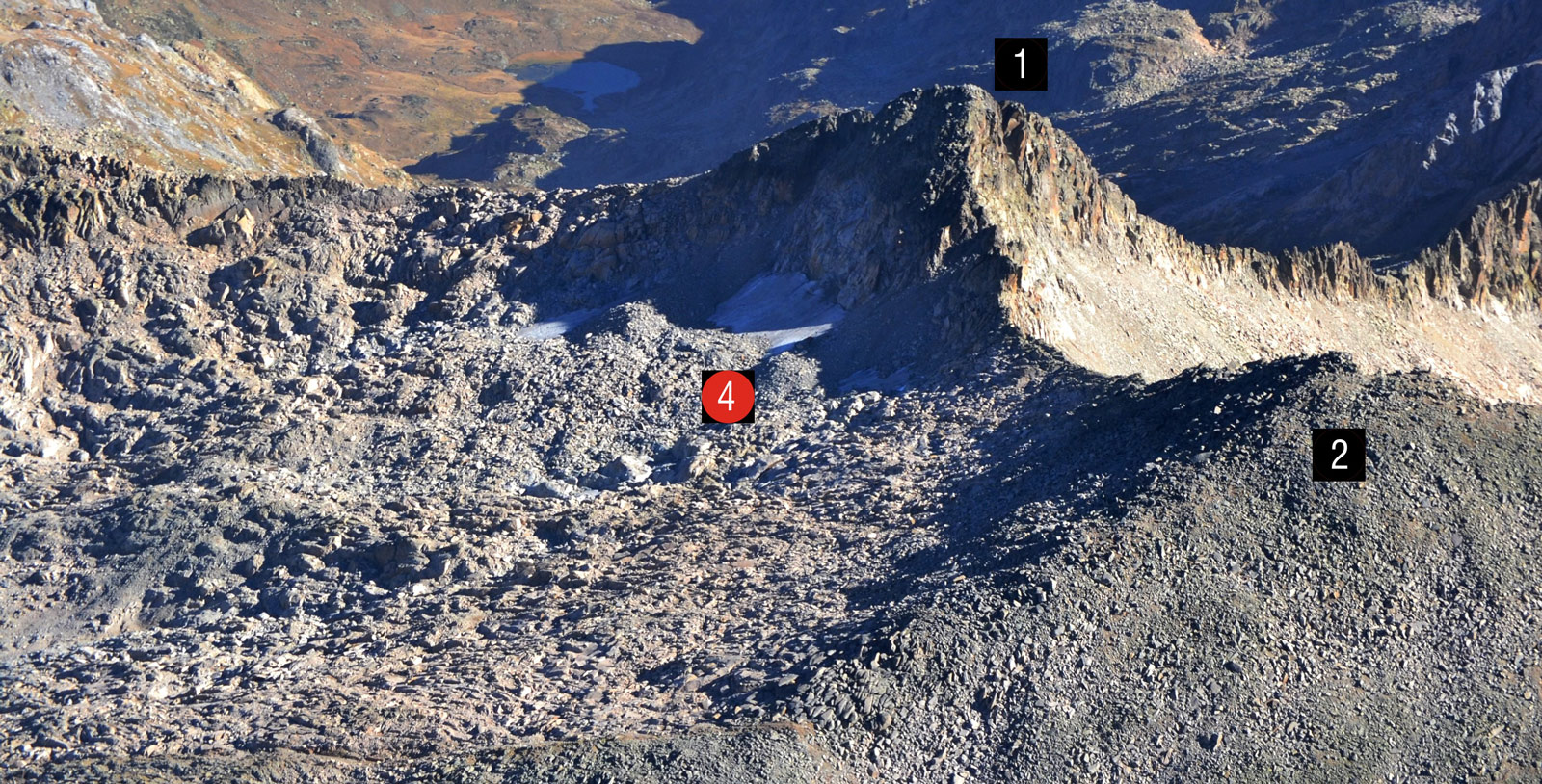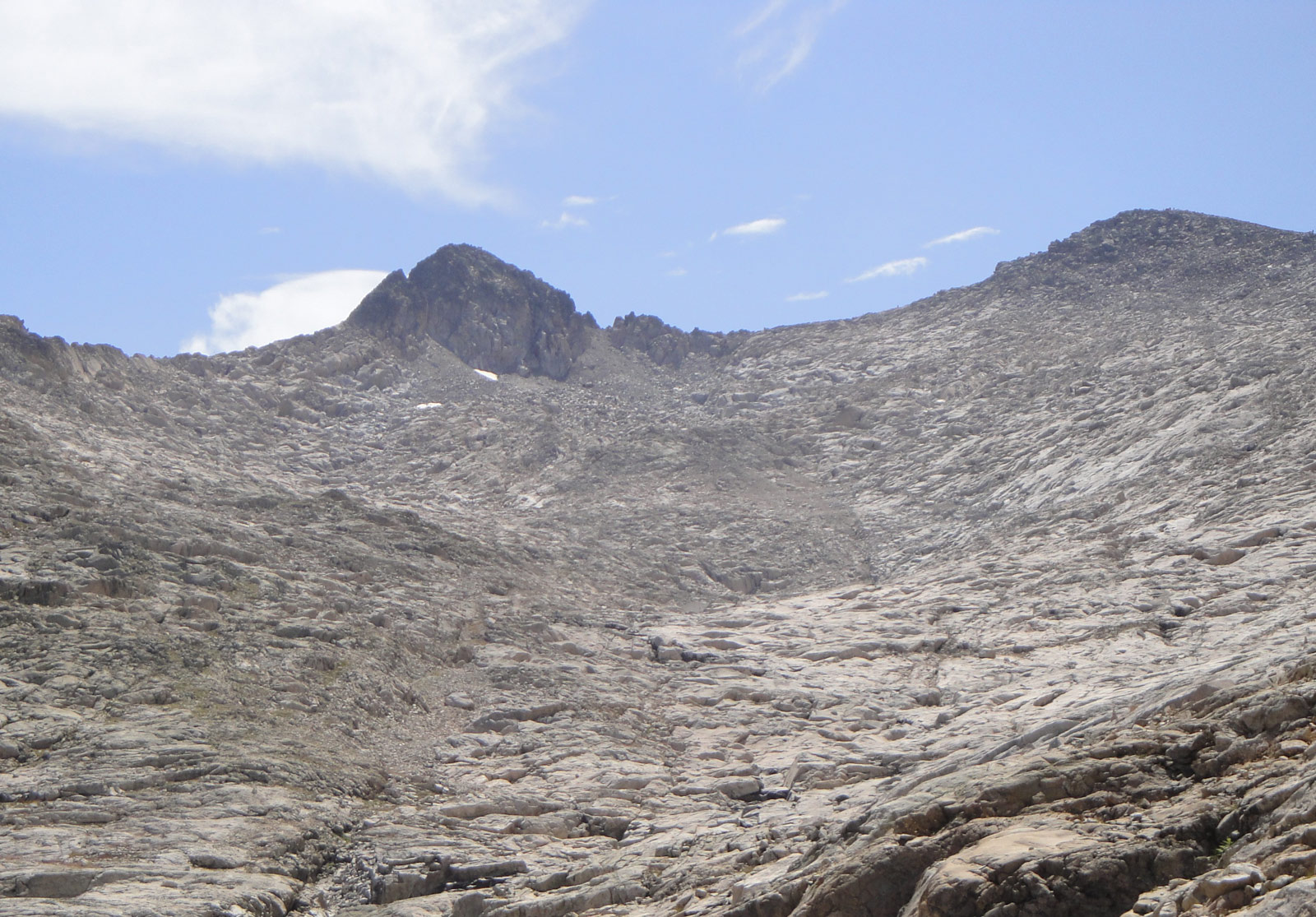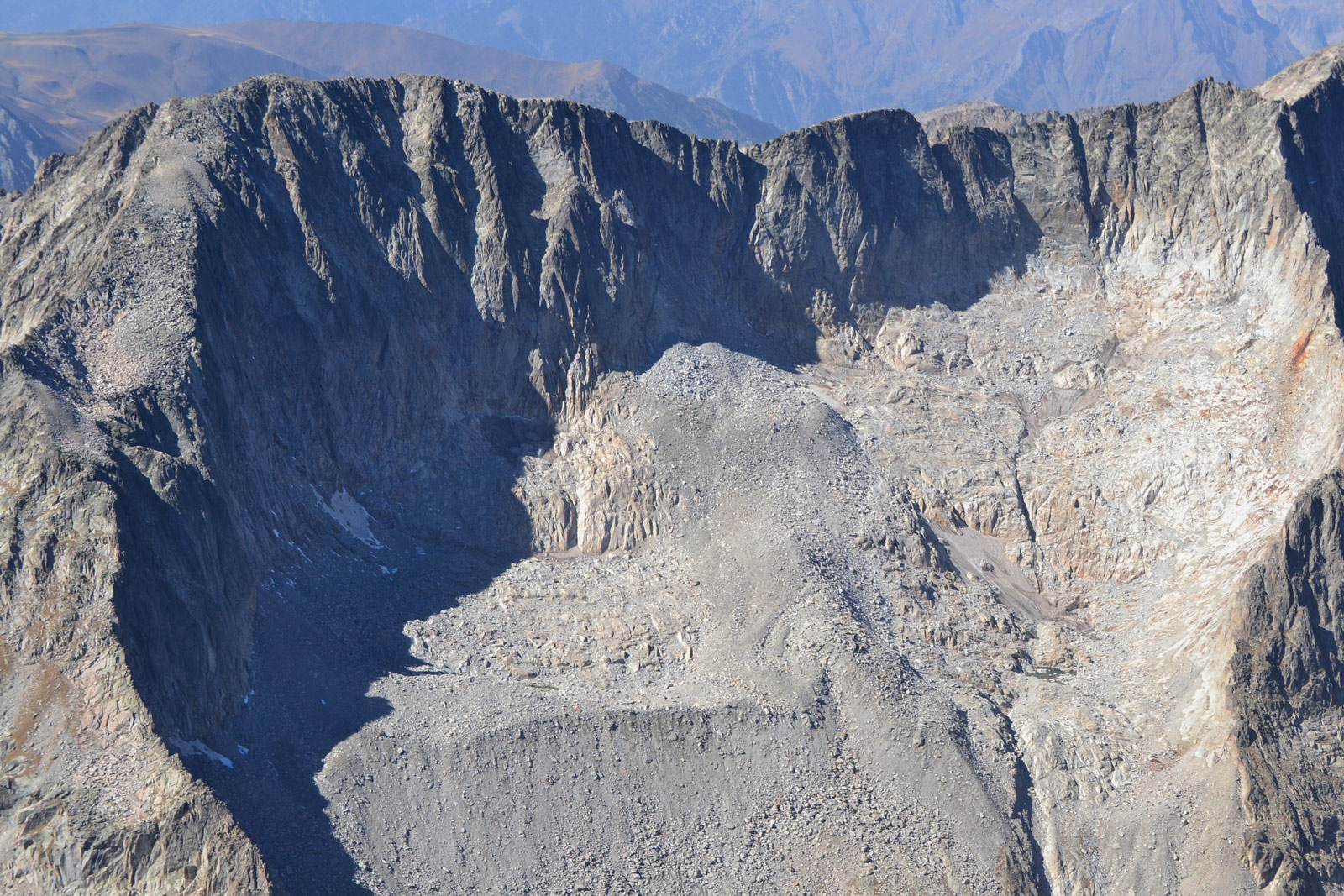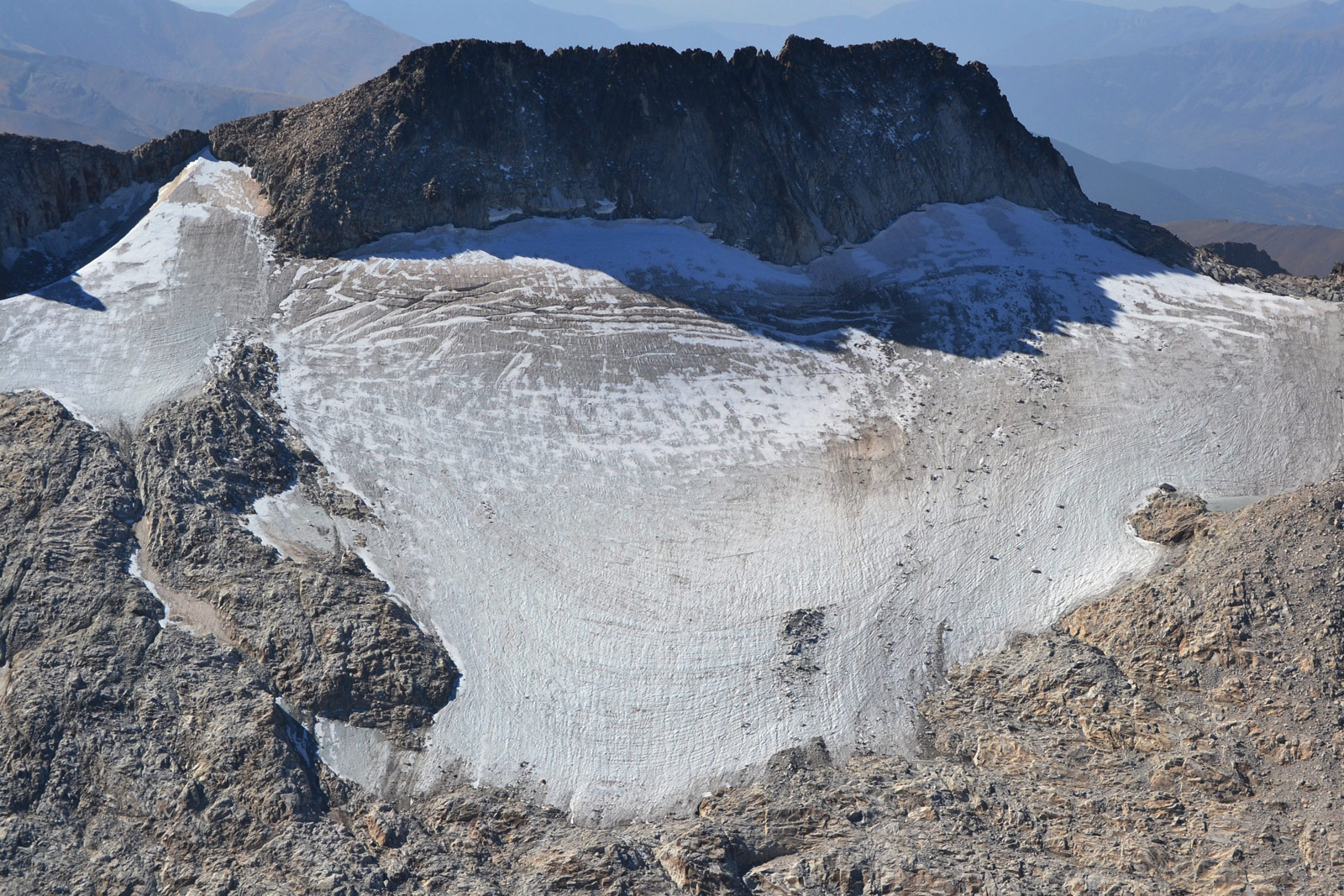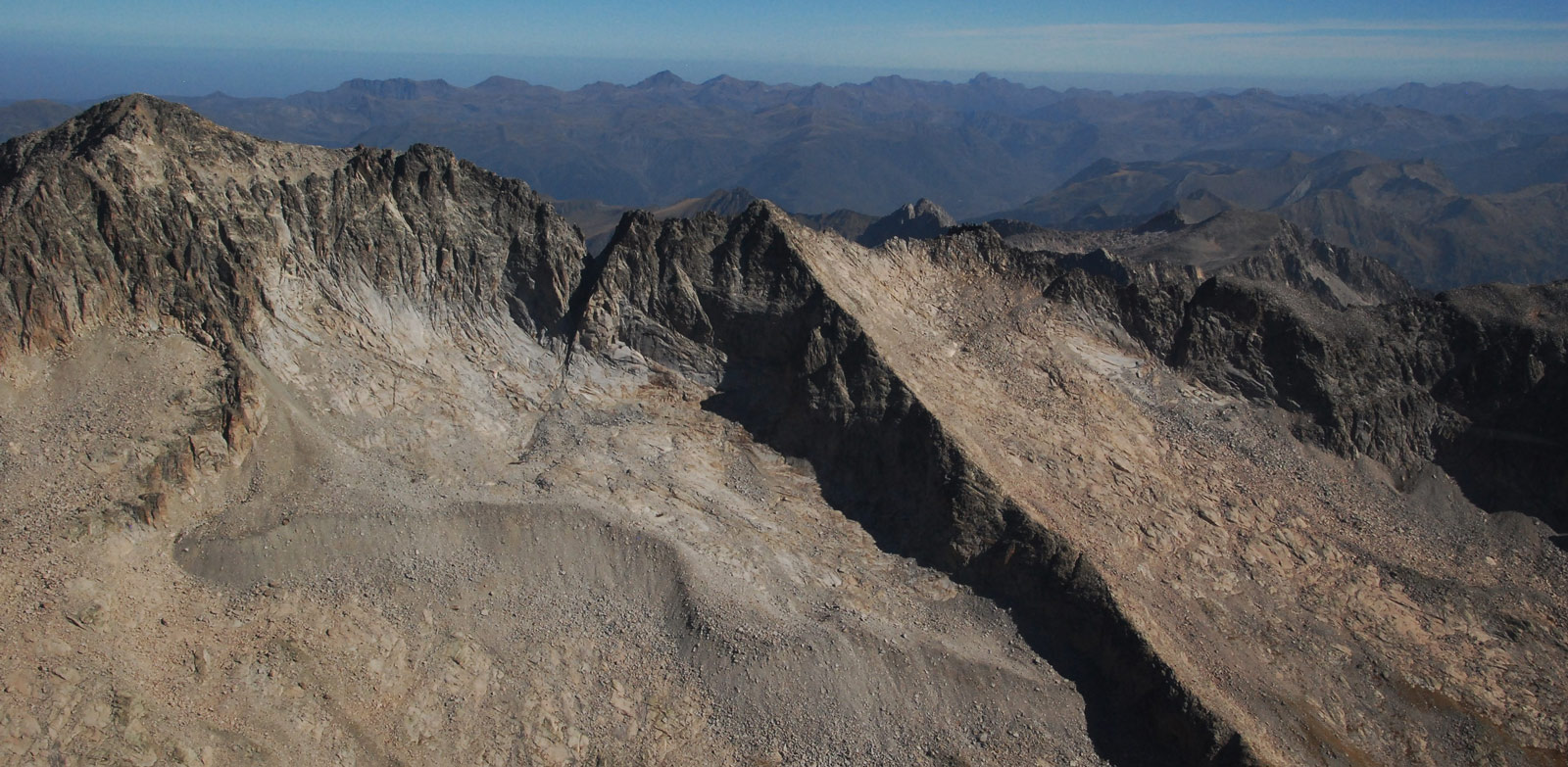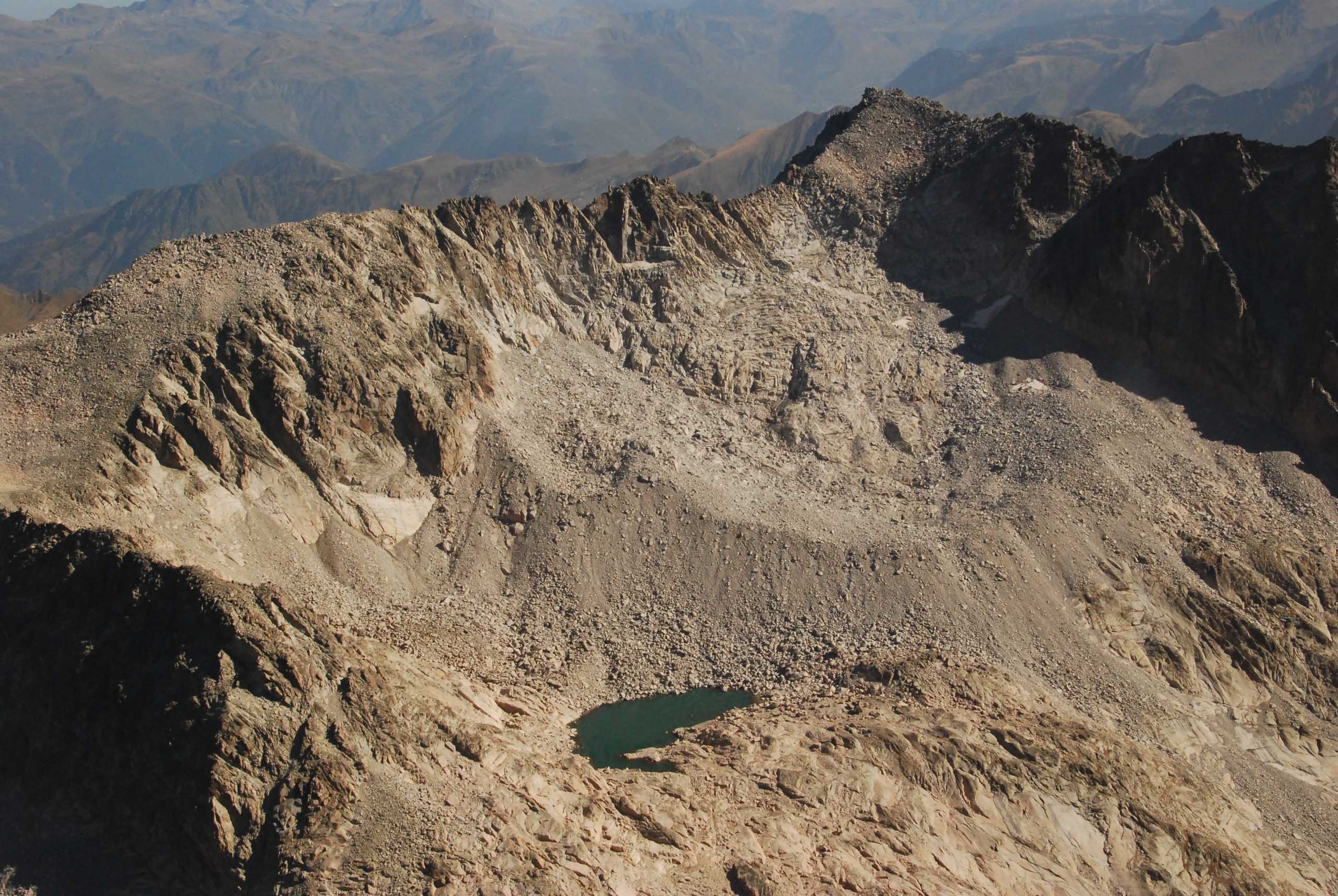The two glacial Glacieres constituted the last remains of glacial ice on the Mulleres slope, where in the later phases of the last glaciation, 10,000 years ago, the Escaleta Glacier was still very active. It was the furthest sector of the feeding basins of the Ésera Glacier (Benasque Valley), which reached a length of 36 km in its best times.
In recent decades, both have been very small, not exceeding 0.3 ha in size. The former frost heaps and later their residual remains only emerged late in the season, as they were protected under a layer of snow until late summer, except in the hottest summers.
From 2009 onwards, they were no longer considered to be icefields and were classified as residual.
The Turó de les Tres Puntes glacier was visible from the Pla de Aigüalluts. The overfeeding provided by the snow that fell from the rocky barrier and a favourable orientation made it possible to minimise its deterioration. Over the following decades, it progressively deteriorated until its extinction in 2020.
The Cap de Toro glacier, also protected from solar radiation until midday due to its westerly orientation, was split into three parts in the 1980s. Before being considered residual, only the central fragment contained glacial ice, flanked almost always by two snowfields until its total extinction in 2019.
Este aparato glaciar pertenece al siguiente macizo:

